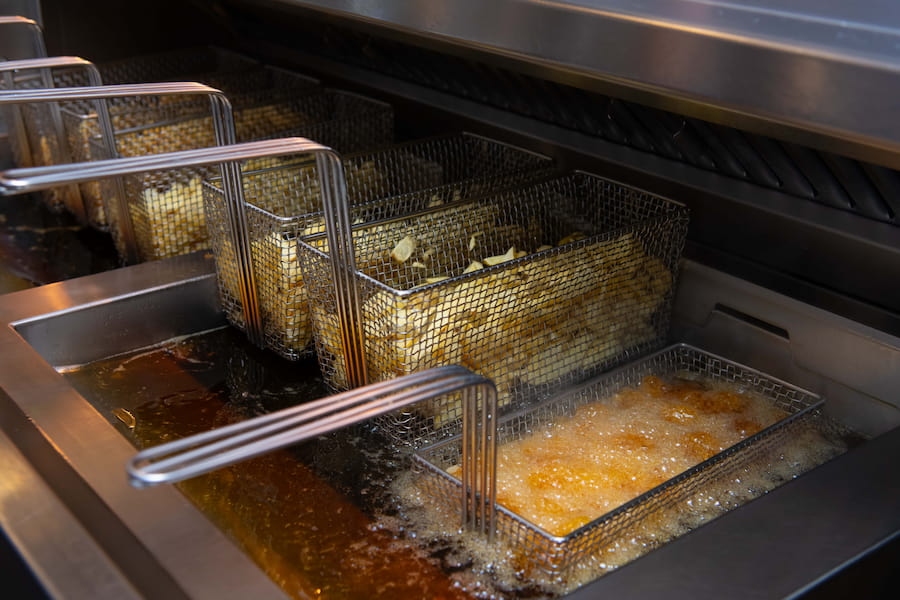An organised approach is necessary to ensure the ideal appearance, flavour, and aesthetic of your chips, whether you are operating a commercial kitchen or making them at home. While using a chip cooker, keeping the same level of quality is a complex process which calls for consideration of several things, such as oil selection, heat management, frying methods, and equipment upkeep.
Choosing the Correct Oil
The kind of oil that is used in a chip fryer has a big impact on the chips’ flavour & quality. Deep-frying is best done with high-smoke point oils, like sunflower, canola, & peanut oils since they can tolerate high heat without degrading. Additionally, the oil must be neutral to prevent changing the chip’s flavour. It’s important to change your oil frequently because used oil can give a foul flavour and have a damaging textural effect. After every usage, you can preserve the oil’s quality and increase its longevity by filtering it to get rid of food bits.
Control of Temperature
Perhaps, the most important thing that has to be taken into consideration to guarantee stable chip quality is to keep the right temperature. In most cases, it should be noted that the chips’ ideal frying temperature falls in the range of 350-375F (175-190C). The chips will absorb more oil if they are exposed to lower temperatures; and if so, they will become greasy. However, if it gets too hot, the exterior may change before the inside is properly done. The kind that is most recommended is one with an accurate thermostat, therefore, it is important to buy a better fryer.
Remain Below the Acrylamide Legislated Mitigation Level
A natural byproduct of manufacturing, acrylamide is a base substance. A low acrylamide content is a requirement for all potato chip manufacturers. Ensure that the raw material has minimal amounts of sugars to reduce the possibility of dangerously high acrylamide concentrations. To lower this risk, the amount of time spent frying & the temperature of the frying oil must both be held low throughout the last frying stage. By letting the sugars leak out in water during the process of blanching, sugar levels can be managed. Installing a chilly Adjustable Temperature Zone (CATZ), in which you fill the fryer with comparatively chilly oil near the end, is an option for multi-zone fryers. By using this kind of technology, you may reduce the likelihood of acrylamide build-up by ensuring that the ambient temperature is low towards the final stage of the frying operation.
The Frying Method
For the sake of quality, the frying process alone needs to be done with precision. Keep in mind that packing the fryer basket excessively will lower the oil’s temperature & result in inconsistent frying. Make sure you fry the chips in tiny batches so they have enough room to spread out while they cook through. Using the double-frying method, which involves first frying the chips at a lower temp (about 325°F or 160°C) till they are mushy, then removing them and letting them cool before frying them again at higher temperatures (about 375°F or 190°C) to get a golden, crispy exterior, is also advantageous.
Equipment Upkeep
For constant quality, the chip fryer has to be serviced on an ongoing basis. After every usage, give the fryer a good scrub to get rid of any leftover food particles & oil. Make sure the heating items are operating correctly and occasionally inspect and change the oil filter in the fryer. Ensuring the fryer’s optimal performance and preventing contamination are achieved by having it in good working order.
Control of Quality
Establishing a quality control procedure is crucial, particularly in business environments. It is helpful to find any problems early on by testing the chips frequently and assessing their feel, flavour, and look. Maintaining uniformity can be facilitated by teaching employees to follow defined frying methods and by recording each step.
Monitoring the frying process with a checklist guarantees that every step—from checking the oil temp to preparing the potatoes—is done correctly.
Final Words
The process of making potato chips is exciting and enjoyable. Additionally, if stored in a dry place & cooked appropriately until completely desiccated, the products might last for several days or even weeks. For you to prepare these for the barbecue tomorrow. Don’t worry about making a homemade side dish while serving them with those brats. You can produce kettle chips at home which will compete with store-bought ones if you have thermal awareness and command over temperature. And that’s going to turn you into an outdoor cooking guru. Visit Ocereyimes for more informative blogs related to food.
